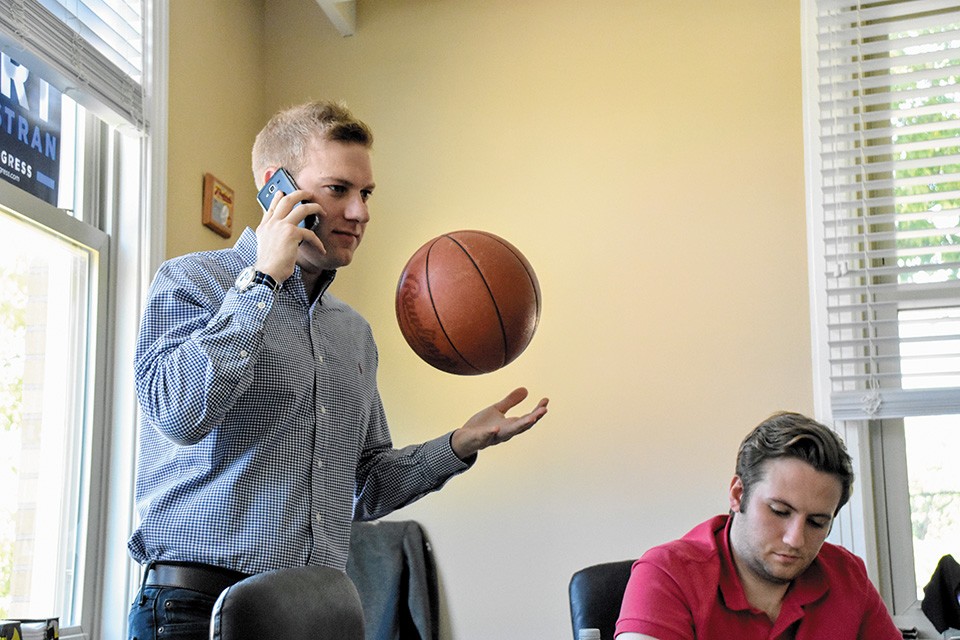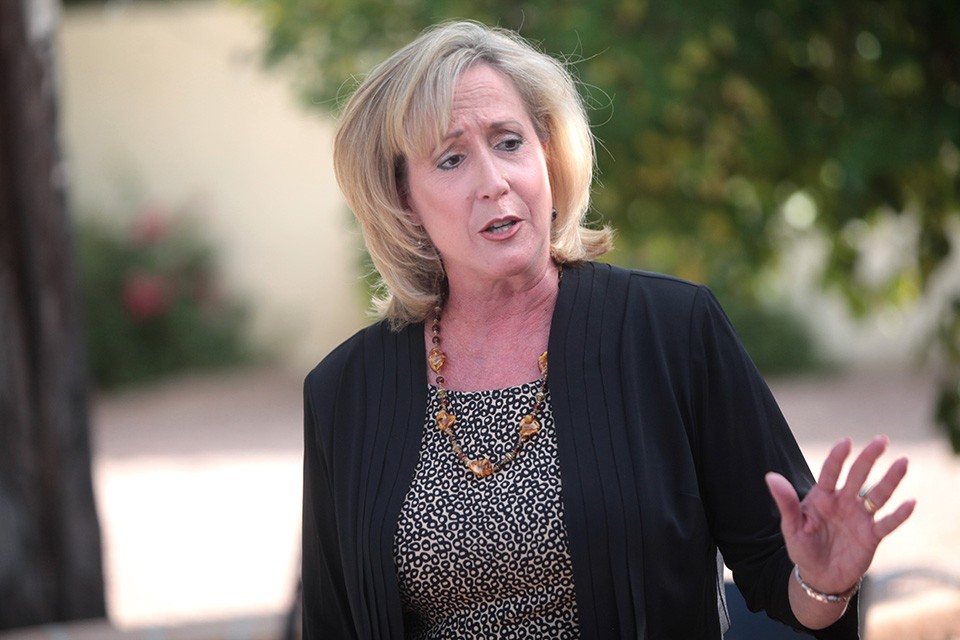
Little more than two hours after running 3.1 miles in Clayton, VanOstran takes a seat in his campaign office in Webster Groves and settles in for every candidate's most-hated task — dialing for dollars.
He has traded his gym clothes for the outfit of the casual attorney: Polo-brand blue-checked shirt, slim-fit Levi's and dark leather boots. His blue blazer is draped nearby.
He has a lot of work to do to beat Ann Wagner. The 56-year-old Republican has had a stranglehold on the district since winning her first House race in 2012, and she's been a major player in the state party since at least the 1990s.
The daughter-in-law of the late anti-abortion activist Loretto Wagner, she rose from local committeewoman to chair the Missouri GOP and co-chair the Republican National Committee. In 2005, then-President George W. Bush appointed her ambassador to Luxembourg, a post she held for four years.
Historically, the Second District has been a perfect fit. Redrawn after the 2010 Census in a power play that wiped out Democrat Russ Carnahan's district, it is majority Republican. It is nearly 90 percent white with good schools and covers the affluent suburbs to the west of the city, angling south into Jefferson County.
It also includes the Clayton headquarters of rental-car giant Enterprise, where her husband's ties as a company executive and lobbyist have been a fundraising windfall.
"We have a going on two-decades relationship with Enterprise," the congresswoman told the St. Louis Post-Dispatch in 2012, when the paper reported major donations from company employees and their relatives. "It's a family."

Wagner has continued to excel at raising money. She took in more than $2 million in 2017, and she had nearly $3 million in cash on hand by mid-July of this year.
Normally, it easily would be enough for Wagner to bury any challenger. But political analysts suspect this year could be different. Nationwide, there are signs that voters, particularly female voters, in suburban districts such as Missouri's Second have had enough of a smack-talking president who continues to side with the NRA after school shootings, has no discernible plan for an Obamacare replacement and mocks the #MeToo movement.
Shifting attitudes have put once-reliably Republican strongholds in play, analysts say. "As we've seen across the country, suburban House districts have really swung to Democrats," says Dave Robertson, a political scientist and professor at University of Missouri-St. Louis. The Pennsylvania Rust Belt district where Democrat Conor Lamb narrowly won a special-election victory in early March was considered more Republican and more pro-Trump than Missouri's Second, he notes. Trump's margin of victory there was twenty points, compared to a little better than ten on Wagner's turf. The more moderate Mitt Romney did better in 2012.
The nonpartisan Cook Political Report shifted its view of the district from a "likely Republican" to "lean Republican" in September. The national Democratic Congressional Campaign Committee has also noticed, adding VanOstran to its Red to Blue program, designed to flip vulnerable Republican districts.
Wagner, who has made opposition to sex trafficking a major focus, denounced Trump during the 2016 campaign after his "grab them by the pussy" comments but has since embraced his presidency, voting with his positions 97 percent of the time, according to analysis by FiveThirtyEight. She continues to push stalwart Republican issues: anti-abortion legislation, support for the military and increased security. (Wagner did not respond to interview requests.)
VanOstran counters with support for health-care issues, such strengthening the Affordable Care Act. He also notes Wagner's vote against the Violence Against Women Act, which designates resources to help battered women. He favors stronger gun regulation and a woman's right to choose. So far, endorsements include United Steelworkers, Planned Parenthood Action Fund and Everytown for Gun Safety.
Kelli Dunaway, an early challenger in the Democratic primary, was initially skeptical of VanOstran. "I was like, 'Goody, just what we need, more straight white guys,'" she says. But she dropped out of the race before the primary and endorsed VanOstran. "I know Ann Wagner is a woman, but she is such a privileged woman," she says. "She has such a limited view."
Still, Wagner is a three-term incumbent and a Republican-party power broker for decades.
"She is not just supported by the Republican establishment — she is the Republican establishment," Robertson says, adding, "The fact that she is vulnerable speaks volumes about the Republican party."
Vulnerable, VanOstran knows, is a long way from defeated. He needs more name recognition, more TV ads, more money. Adding a degree of difficulty, he has refused corporate cash. It is a position that distinguishes him from Wagner, who by mid-July had accepted nearly $1.3 million from political action committees. It also plays well with voters, but the high ground does not get your ads on TV.
And so, for 30 hours every week, VanOstran is on the phone, calling potential donors. In his Webster Groves office, he sits at a table with campaign finance director Clark Conlisk and deputy finance director Samuel Rebmann.
By now, they have a routine. VanOstran and Conlisk both dial from a long list of potential donors. Most calls go to voicemail. But if Conlisk gets a live person on the phone it sets off a merry-go-round of action. After a quick greeting, he hands his cell over to VanOstran, who makes the pitch directly even as he passes his phone to Rebmann. Again, most calls go to voicemail, so Rebmann will likely leave a message. If someone picks up, he hustles out of the room, so he and VanOstran and possibly Conlisk are not all talking over each other. When the calls eventually clear, they begin again.
The intricate choreography can be a bit confusing to watch, but the three seem at ease, chatting about fantasy football or campaign strategy during the occasional dead spaces. VanOstran picks up a basketball from the worn carpet and tosses it in his palm as he wanders around the room.
As much as anything, it is his ability as a fundraiser that first marked VanOstran as a serious contender. He had $454,219 on hand by the July reporting deadline — not Wagner money, but groundbreaking for a Democrat in that district, and enough to get on TV. By the end of September, he will have completed his best quarter yet, raising just shy of $750,000.
On this Sunday, he plows through nearly two hours of rapid-fire calls, and then heads out the door to his next event. As he rides along, Conlisk texts him more names and numbers. He gets to dialing.






